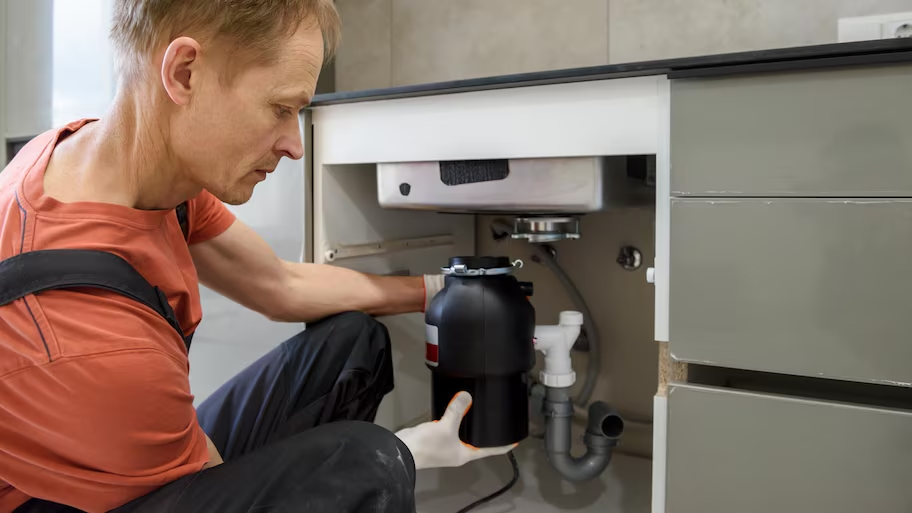The article author is making a few good annotation on the subject of How to fix a pretty consistent leak from my garbage disposal overall in this article in the next paragraphs.

Waste disposal unit are vital cooking area appliances that assist in disposing of food waste effectively. Nonetheless, a leaking garbage disposal can be a discouraging and unpleasant problem to handle. Fortunately, lots of leaks can be repaired quickly with a few straightforward steps. In this write-up, we will talk about just how to fix a leaking waste disposal unit efficiently.
Introduction
Waste disposal unit are installed under cooking area sinks and are developed to shred food waste right into smaller items, permitting it to travel through the plumbing system quickly. While these devices are generally trusted, leakages can happen gradually due to deterioration, loosened links, or damages to the system.
Common Sources Of Leaks in Garbage Disposals
Worn Seals and Gaskets
Seals and gaskets play a crucial function in avoiding water from dripping out of the garbage disposal. In time, these parts can deteriorate, causing leakages around the disposal unit.
Loose Connections
The links in between the waste disposal unit and the plumbing system can become loose gradually, causing water to leak out during operation.
Fractures or Openings in the Disposal Device
Physical damages to the waste disposal unit, such as splits or openings in the real estate, can additionally cause leakages.
Determining the Resource of the Leakage
Before attempting to take care of a dripping garbage disposal, it is essential to determine the source of the leak. This can normally be done through visual assessment or by carrying out basic examinations.
Visual Inspection
Examine the waste disposal unit device carefully for any indications of water leak. Pay attention to locations around seals, gaskets, and link factors.
Examining for Leakages
One way to examine for leaks is by running water via the disposal system and looking for any kind of visible indications of leakage.
Devices and Materials Needed for Repairing a Leaking Waste Disposal Unit
Prior to starting the repair service procedure, gather the needed devices and products, consisting of a screwdriver, adjustable wrench, plumbing professional's putty, substitute seals or gaskets, and epoxy or patching product for fixing splits or openings.
Step-by-Step Overview to Dealing With a Dripping Waste Disposal Unit
Shut off the Power
Before attempting any repairs, ensure that the power to the waste disposal unit device is switched off to avoid the risk of electric shock.
Find the Leakage
Identify the precise place of the leakage and determine the cause.
Tighten up Connections
Use a wrench to tighten up any type of loose links in between the disposal device and the pipes system.
Replace Seals or Gaskets
If the leak results from used seals or gaskets, remove the old elements and change them with new ones.
Patching Cracks or Openings
For fractures or openings in the disposal system, usage epoxy or an appropriate patching material to seal the damaged location.
Evaluating the Waste Disposal Unit After Repair Work
As soon as the repair is total, test the waste disposal unit by running water through it to guarantee that the leakage has been dealt with.
Preventive Upkeep Tips to Prevent Future Leakages
To avoid future leakages, it is necessary to carry out regular maintenance on your waste disposal unit. This consists of maintaining it clean, avoiding putting non-food things or hard things down the disposal, and regularly checking for leakages or various other problems.
Conclusion
Finally, dealing with a leaking garbage disposal is a reasonably simple procedure that can be completed with standard devices and materials. By following the actions outlined in this article and exercising preventative upkeep, you can maintain your garbage disposal in good working condition and prevent costly repairs in the future.
HERE’S HOW TO FIX YOUR GARBAGE DISPOSAL
WHAT TO DO IF SOMETHING IS STUCK IN YOUR GARBAGE DISPOSAL
If the impeller won’t turn, there’s probably something stuck in the disposal. It could be a steak bone or peach pit, although plumbers report pulling all sorts of inappropriate objects out of disposals, such as bottle caps or aluminum foil. Make sure power to the disposal is off, and look inside to see if you can see the source of the jam.
Never stick your fingers in a disposal. Pull out anything you see with tongs or pliers.
If the disposal still won’t work, it may be time to call a plumber or consider buying a new disposal. GEM Plumbing & Heating is here for all of your garbage disposal needs.
WHAT TO DO IF YOUR GARBAGE DISPOSAL DRAIN IS CLOGGED
Take everything out from underneath your sink and put a bucket or other container under your disposal to catch any water that drains out. Disconnect your disposal from the power supply. If it’s plugged into a wall outlet, unplug it. If it’s hardwired into an electrical box, go to the electrical panel and turn off the breaker for the disposal. Pour ¼ cup of baking soda into the drain, followed by ½ cup of white vinegar. Give the solution a few minutes to fizz and do its work. Look into the disposal with a flashlight to see if you can see an object that might be causing the clog. If you see it, remove it using tongs or pliers. MORE TIPS ON DEALING WITH A CLOGGED GARBAGE DISPOSAL
Never use drain cleaner in a garbage disposal. It can damage the plastic parts inside the disposal. You can also be splashed with the caustic liquid while working to clear the clog. Beware! Never stick your fingers into a garbage disposal. Trust us — not a good idea. In many instances, your dishwasher drains through your garbage disposal. This allows the disposal to grind any large food particles that may be drained out of your dishwasher. There are some jurisdictions, however, where the plumbing code prohibits such a connection. WHAT TO DO WHEN YOUR DISHWASHER DRAINS THROUGH THE DISPOSAL
Run some water in the sink so your plunger has at least a ½-inch of water to create a seal and plunge vigorously up and down several times. You may need to repeat this several times. Run hot water down the drain to clear any residue that remains.

As a devoted reader on Why Is , I assumed sharing that excerpt was really helpful. Sharing is nice. Helping others is fun. Bless you for your time. Visit us again soon.
Browse Our Site